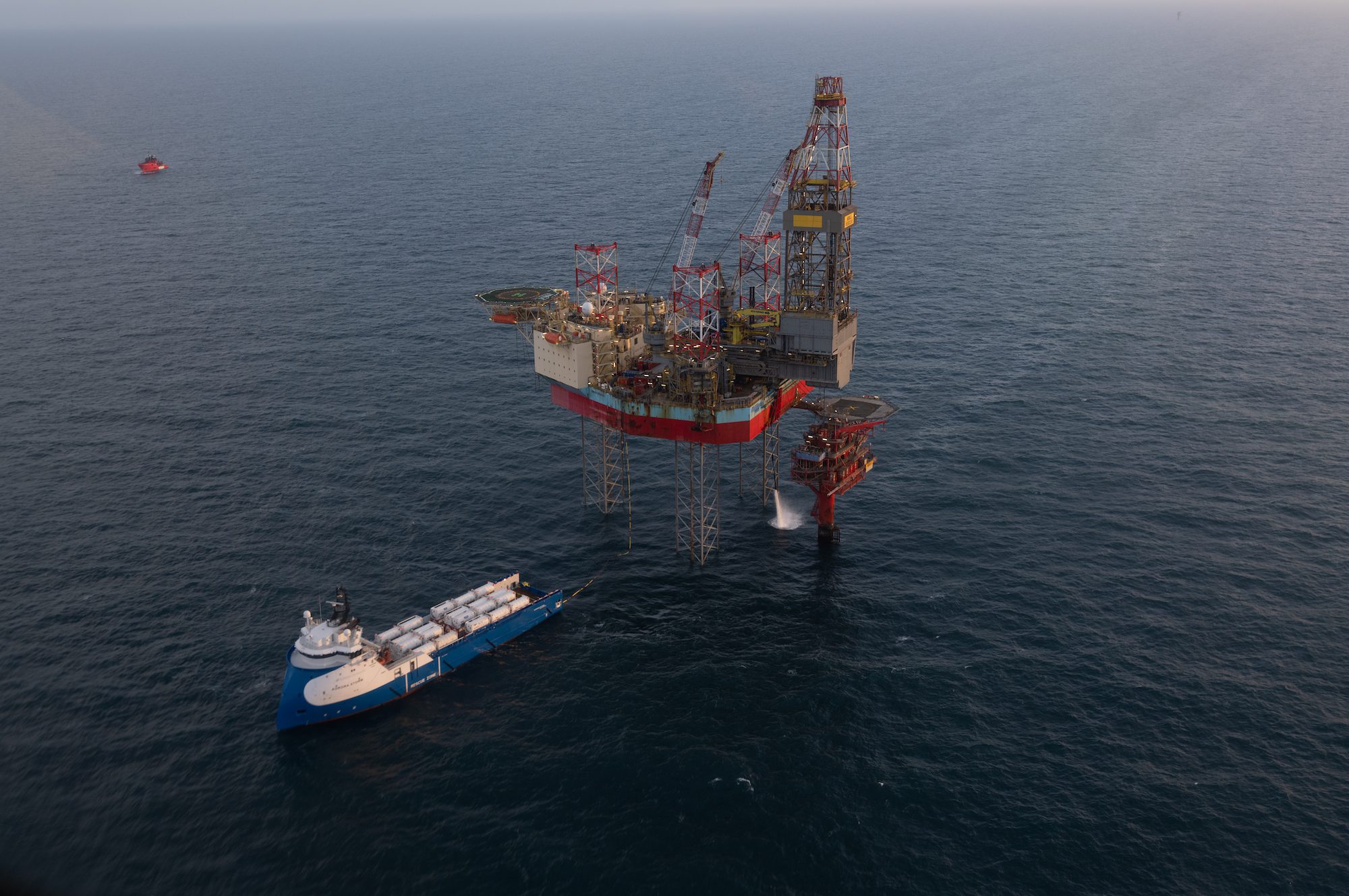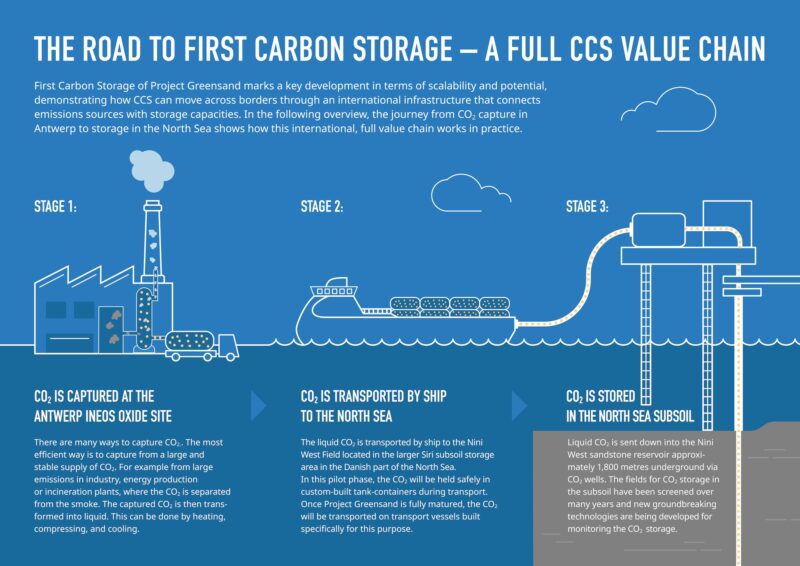Ships Fleeing The Red Sea Now Face Perilous African Weather
By Alex Longley and Paul Burkhardt (Bloomberg) –Ships sailing around the southern tip of Africa are wrestling with a bout of bad weather that has already run one vessel aground and...


In March, a consortium led by UK-based INEOS claimed the world’s first injection of captured carbon dioxide into a depleted oil field in the Danish North Sea. The captured CO2 was transformed into liquid form and transported to the Nina West field by the Aurora Storm where it was injected into the seabed by the Noble Resolve jack-up. Image courtesy INEOS Energy
A consortium led by UK-based chemicals company INEOS is claiming the world’s first injection of captured carbon dioxide into a depleted oil field in the Danish North Sea.
The initiative, called Project Greensand, is aimed at demonstrating the feasibility of carbon capture and storage (CCS) to reduce carbon emissions in the fight against climate change.
The carbon dioxide was captured at an INEOS site in Belgium, tranformed into liquid form, and successfully transported to the Danish North Sea for permanent storage at the INEOS-operated Nini field at a depth of around 1,800 meters below the seabed. His Royal Highness Crown Prince Frederik of Denmark initiated the injection during a celebratory event on Wednesday.
“This is a breakthrough for Carbon Capture and Storage. It is the first time that carbon dioxide has been successfully captured, transported cross-border and safely stored offshore anywhere in the world,” said Sir Jim Ratcliffe, a Project Greensand backer and founder and chairman of INEOS.


INEOS and its partner Wintershall Dea are heading the Project Greensand consortium, which is made up of 23 organizations from business, academia, government, and start-ups. The project aims to safely capture and permanently store up to 8 million metric tons of carbon dioxide each year starting in 2030 at the Ineos-operated Siri area, equating to approximately 40% of Denmark’s total emission reduction target.
The European Commission estimates that the EU will need to store up to 300 million tonnes of CO2 per year by 2050 to meet its climate goals.
“This is a big moment for Europe’s green transition, and for our clean tech industry. The first ever full value chain, for carbon capture and storage in Europe,” Ursula von der Leyen, President of the European Commission. “You are showing that it can be done. That we can grow our industry through innovation and competition, and at the same time, remove carbon emissions from the atmosphere, through ingenuity and cooperation. This is what Europe’s competitive sustainability is all about.”
Project Greensand is supported by Danish through the Energy Technology Development and Demonstration Program (EUDP). CCS is considered a key technology in reaching the Danish 2045 net zero target.
“Project Greensand proves that Carbon Capture and Storage is a viable way to permanently store CO2 emissions under the North Sea. It has a crucial role to play in reaching net zero in Denmark, Europe and beyond,” added Hugo Dijkgraaf, Board Member and Chief Technology Officer at Wintershall Dea.
The injected CO2 will be monitored closely, contributing to the understanding and growth of carbon storage technology.
The sandstone fields of the larger Siri Fairway that holds the Nini field in the Danish North Sea are located at an optimal depth of 1,500 to 2,200 meters. The area is considered to be extremely stable geologically and very safe permanent CO2 storage site, having retained gas and oil for more than 10 million years.
Join the gCaptain Club for curated content, insider opinions, and vibrant community discussions.


Join the 107,129 members that receive our newsletter.
Have a news tip? Let us know.
Access exclusive insights, engage in vibrant discussions, and gain perspectives from our CEO.
Sign Up




Maritime and offshore news trusted by our 107,129 members delivered daily straight to your inbox.



Essential news coupled with the finest maritime content sourced from across the globe.
Sign Up